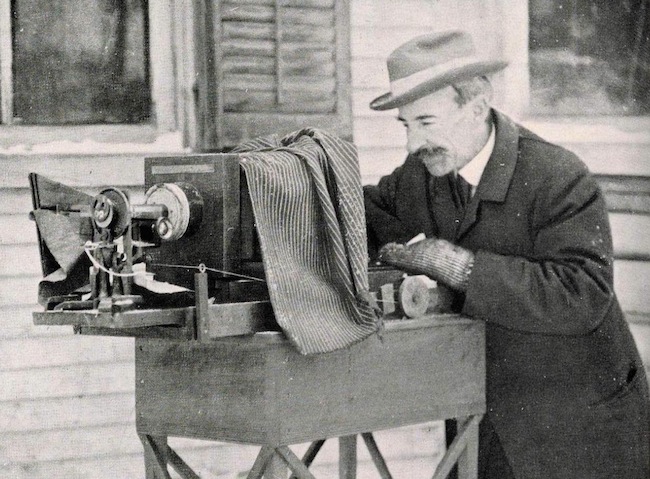
The past two weeks the folks of WNC have got a dose of winter with ice and snow storms that blanketed our landscape in white. This got me thinking about a man of science, and equally a man of God, that not many have encountered in their studies. His name was Wilson Bentley (1865-1931) and he was born on a farm in Jericho, Vermont. An ideal place for snow, because this area of the country receives an average annual snowfall of over 120 inches.
At
an early age he showed an interest in science and also made a profession of faith
in Christ before his teen years. A true experimentalist, Bentley meticulously
collected large amounts of data on the weather, and completed a variety of
pioneering experiments to understand raindrops, frost, solar wind, and
moisture. While he was still a boy at age 14, his mother, a school teacher,
gave him a microscope that he used to observe everything from flowers to
snow—and snow especially fascinated him. One of his inspirations to study snow
was the Bible verse in Job 38:22 in which God asks “Have you entered into the
treasures of the snow?”
At
age 15 he began drawing snowflakes while looking at them through his
microscope—no easy task, because most of them melted before he could complete a
drawing. At age 16 he learned about a camera that could be used with a
microscope. His parents saved the money—and when Willie was 17 they bought him
the camera. It took him over a year of failures before he finally achieved his
goal—a photograph of a snowflake, the first one ever taken. Each year he was
able to produce at least a few photos—but in some years he managed to make
hundreds!
Bentley’s
notoriety as a scientist and photographer grew and he was eventually given the
name, “Snowflake Bentley.” He became the world’s leading authority on
snowflakes, and was even selected to write the article in the Encyclopedia Britannica on snow. He
would go on to capture more than 5,000 snowflake photos in his lifetime, no two
alike. His snow crystal photomicrographs were acquired by colleges and
universities throughout the world and he published many articles for magazines
and journals including, Scientific
American and National Geographic.


Bentley
experienced the glory of God through his work with the microscope. He wrote
about the exquisite beauty of frozen world like this:
“The
wonders of God’s handiwork are to be found in the tiniest details of all He has
made. Snowflakes are miracles of beauty; and it seemed a shame that this beauty
should not be seen and appreciated by others. Every crystal was a masterpiece
of design; and no one design was ever repeated. When a snowflake melted, that
design was forever lost. Just that much beauty was gone, without leaving any
record behind. I became possessed with a great desire to show people something
of this wonderful loveliness, an ambition to become, in some measure, its
preserver. God uses his creation to declare his glory to us.”[1]
Have
you stopped recently to think about the lavish beauty that God has built into
our world? From stars to snowflakes, God has made a universe with complexity
and beauty that we cannot fully comprehend. Why does He do it? Because He is
the fountainhead of beauty and He loves to give gifts that make us pause,
wonder and take our breath away. God uses His creation—a magnificent rose,
oceanic splendor, a vibrant sunset, a unique snowflake—to declare His existence
in this fallen world. God’s glory fills the whole earth (Is. 6:3) and He upholds
all things by the power of His word (Heb. 1:3).


Yet,
we must not just enjoy the gift of beauty without bowing in worship before the
Giver of Beauty. As C.S. Lewis wrote, “The books or music in which we thought
beauty was located will betray us if we trust to them; it was not in them, it
only came through them, and what came through them was longing. These things—the
beauty, the memory of our own past—are good images of what we really desire,
but if they are mistaken for thing itself, they turn into dumb idols, breaking
the hearts of their worshippers. For they are not the things itself; they are
the scent of a flower we have not found, the echo of a tune we have not heard,
news from a country we have never yet visited.”[2]
The
beauty which grabs our attention and affection is merely a signpost pointing us
in the direction of the source of all beauty—God. It is in Him that our deepest
desires will be met when we can finally gaze upon His glory (Ecc. 3:11; 1 Cor.
2:9; Rev. 22:4).
No comments:
Post a Comment